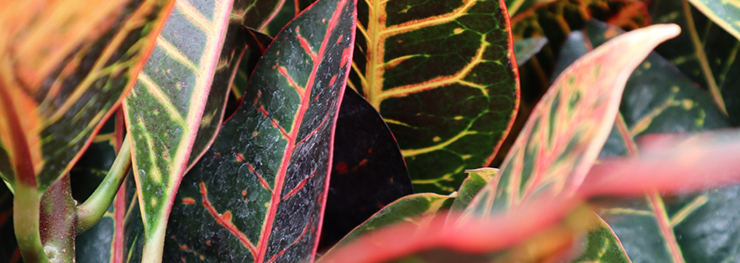All necessary information on plant care
Didn't find your plant? Contact us and we will help you!
A
Caring for your Avocado Beneke (Benin) tree in Hawaii is a rewarding experience. Let’s break it down into easy steps that fit our local style:
Planting:
- Location: Find a sunny spot with good drainage. Avocados love the Hawaiian sun but need well-draining soil to avoid root rot.
- Soil: Loose, sandy, or loamy soil works best. If your soil is heavy clay, consider mixing in some compost or planting on a slight mound to improve drainage.
Watering:
- Young Trees: Water regularly to keep the soil moist but not waterlogged. For the first few years, give it a good soak once or twice a week, especially during dry spells.
- Mature Trees: Once established, the Beneke variety is fairly drought-tolerant. Water deeply once every two weeks if it hasn’t rained.
Feeding:
- Fertilizer: Avocados love nutrients! Feed them three times a year—spring, summer, and fall—with a balanced fertilizer. Look for one with a good mix of nitrogen, phosphorus, and potassium, and don’t forget the trace minerals.
Pruning:
- Shape and Health: Prune lightly to shape your tree and remove any dead or crossing branches. It helps to keep the center of the tree open for better air circulation.
Pests & Problems:
- Watch Out For: Root rot is the biggest concern, especially in poorly drained soils. Keep an eye out for yellowing leaves or poor growth. Also, be mindful of pests like aphids and scale insects.
Harvesting:
- When to Pick: Avocados don’t ripen on the tree. When the fruits are full-sized, pick a few and let them ripen indoors. If they soften up nicely, it’s time to harvest!
Taking care of your Avocado Beneke in Hawaii isn’t just about following steps—it’s about feeling connected to the land and enjoying the fruits of your labor. With a little aloha and these tips, your avocado tree will thrive, giving you delicious, homegrown avocados for years to come! 🌱🥑
Caring for your Avocado Benin tree in Hawaii can be both fulfilling and easy when you follow these simple steps:
Planting:
- Location: Choose a spot with plenty of sunlight and well-draining soil. The Benin variety thrives in the Hawaiian sun but needs soil that drains well to prevent root issues.
- Soil: Ideally, plant in sandy or loamy soil. If you have heavy soil, mix in organic matter like compost to improve drainage, or consider planting on a mound.
Watering:
- Young Trees: Water your avocado tree regularly, ensuring the soil stays moist but not soggy. In the first few years, aim to water deeply once or twice a week, especially during dry periods.
- Mature Trees: Once established, your Avocado Benin tree will be more drought-resistant. Water deeply every two weeks if there's no rain.
Feeding:
- Fertilizer: Feed your tree three times a year—spring, summer, and fall—with a balanced fertilizer that contains essential nutrients like nitrogen, phosphorus, potassium, and trace elements.
Pruning:
- Maintain Health: Lightly prune your tree to shape it and remove any dead or crossing branches. This helps to promote good air circulation and prevent disease.
Pests & Problems:
- Be Vigilant: Keep an eye out for root rot, which can occur in poorly drained soils. Also, watch for pests like aphids or scale insects, which can be managed with organic sprays or natural predators.
Harvesting:
- Perfect Timing: Avocados do not ripen on the tree. When the fruit is full-sized, pick a few and let them ripen indoors. If they soften up nicely, then it’s time to harvest the rest.
Caring for your Avocado Benin tree in Hawaii means nurturing it with the same care and respect we give to our 'āina (land). By following these simple steps, you'll enjoy delicious, homegrown avocados while connecting with the land and tradition. 🌱🥑
 This plant is native to the tropical forests of Southeast Asia and Oceania. For decades, plants in the Croton family were considered outdoor-only, needing several hours of direct light to thrive.
This plant is native to the tropical forests of Southeast Asia and Oceania. For decades, plants in the Croton family were considered outdoor-only, needing several hours of direct light to thrive.
Croton petra plants are susceptible to the bacterial diseases crown gall and xanthomonas leaf spot, and the fungal diseases anthracnose and stem gall and canke Shop this plant
 This plant is native to the tropical forests of Southeast Asia and Oceania. For decades, plants in the Croton family were considered outdoor-only, needing several hours of direct light to thrive.
This plant is native to the tropical forests of Southeast Asia and Oceania. For decades, plants in the Croton family were considered outdoor-only, needing several hours of direct light to thrive.
Croton petra plants are susceptible to the bacterial diseases crown gall and xanthomonas leaf spot, and the fungal diseases anthracnose and stem gall and canke Shop this plant
 This plant is native to the tropical forests of Southeast Asia and Oceania. For decades, plants in the Croton family were considered outdoor-only, needing several hours of direct light to thrive.
This plant is native to the tropical forests of Southeast Asia and Oceania. For decades, plants in the Croton family were considered outdoor-only, needing several hours of direct light to thrive.
Croton petra plants are susceptible to the bacterial diseases crown gall and xanthomonas leaf spot, and the fungal diseases anthracnose and stem gall and canke Shop this plant
B
C
D
E
F
G
H
K
M
R
S
V






